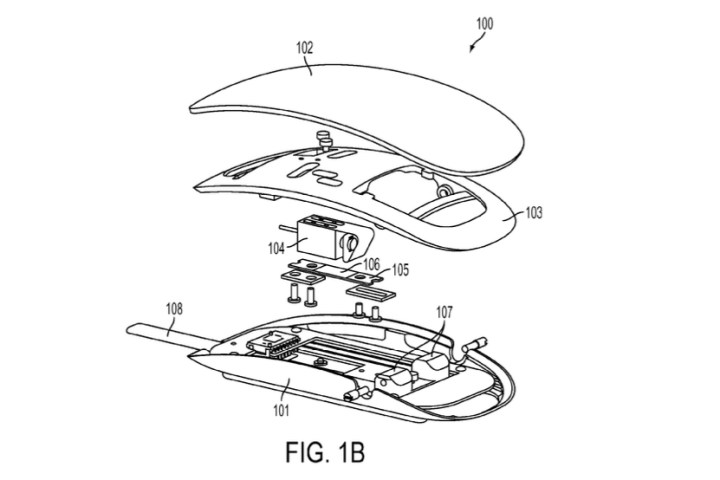
The latest rendition of the Magic Mouse, creatively dubbed Magic Mouse 2, sacrificed lithium double-A batteries in favor of an uncomfortably misplaced Lightning connector port. Force Touch, meanwhile, was curiously absent. In the patent, originally reported on by Patently Apple, it appears the Cupertino company is rethinking its mouse’s design for the better.
A mouse is typically an input device that can generally be manipulated by a user to provide directional input to an associated electronic device. In some cases, such a mouse may include one or more selection elements to which a user can apply force in order to indicate a selection. However, such selection elements are generally binary-they are activated, or they are not. That is, the selection elements typically only detect whether or not a force exceeding a particular threshold has been applied and cannot determine the actual amount of force that has been applied within a range of force amounts.
While all of this is very technical and filled with senseless jargon, in short it’s saying that a normal mouse button can’t tell how much pressure is being applied. As with the MacBook and iPhone 6s, a haptic motor will bring the inevitable Magic Mouse reform more inline with Apple’s other products.
A force sensing input device (such as a force sensing mouse) includes at least one force sensor and at least one top portion movably connected to at least one bottom portion. When a force is applied to the top portion, the top portion exerts pressure on the force sensor. The force sensor obtains force data based upon the pressure. The amount of force applied to the top portion, within a range of force amounts, is determined from at least the force data. In this way, a broader range of inputs may be receivable from the force sensing input device as compared to input devices that merely detect whether or not a button or similar element has been pushed.
Of course, as with all patent reports, it’s worth noting that many of these blueprints never actually make their way into production. With this one, however, a Force Touch-enabled Magic Mouse has been prophesied enough as to seem unavoidable, and the technology to create the device already exists in Apple’s stable of on-the-shelf products. We think this one will make it to users before the end of 2016.
Editors' Recommendations
- 6 mice you should buy instead of Apple’s Magic Mouse
- Intel could give us Wi-Fi 7 devices long before Apple gets around to it
- Apple spring event: Everything that didn’t get announced
- Supply chain issues forced Apple to stop making iPhone 13s in October
- Google Pixel 6 vs. Apple iPhone 13: Is Google’s new flagship an Apple eater?

